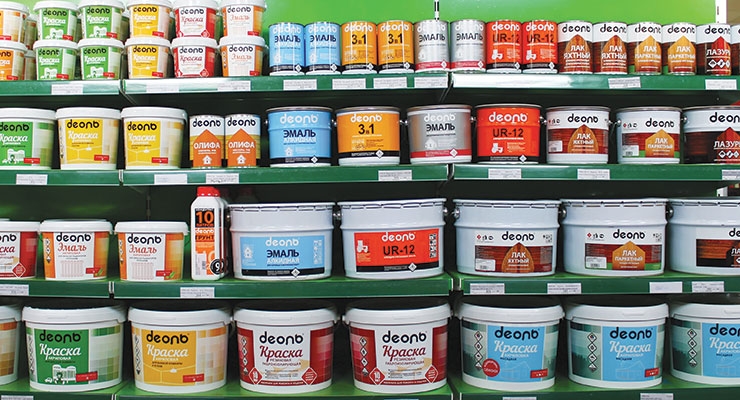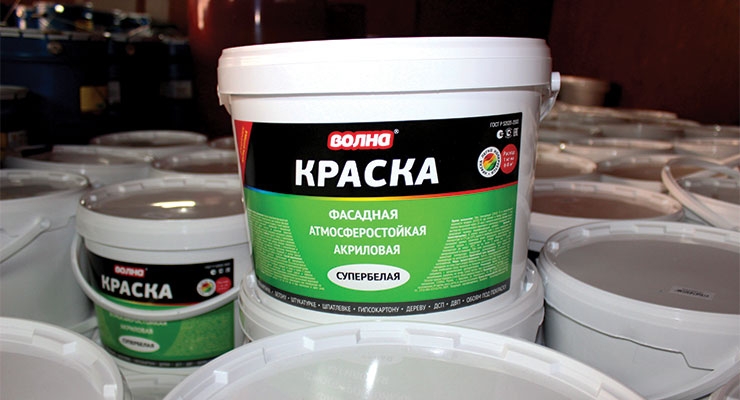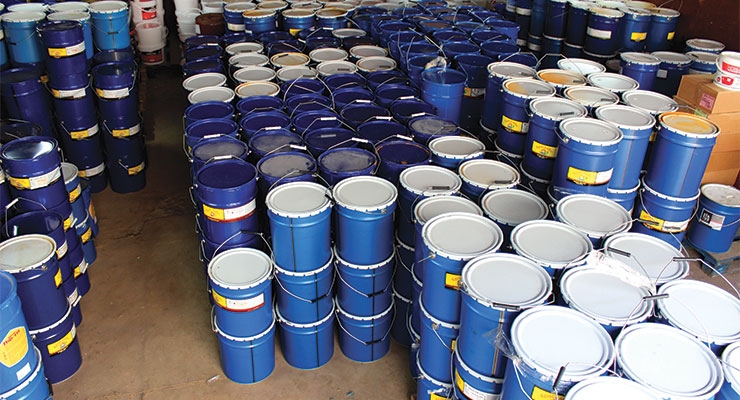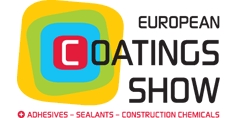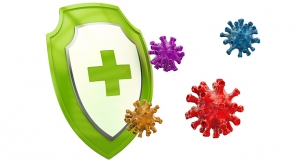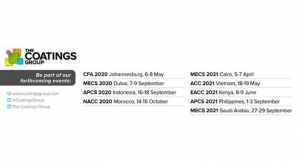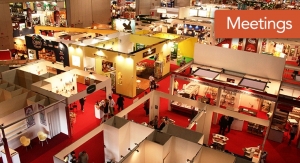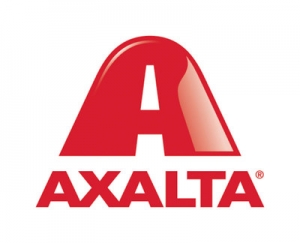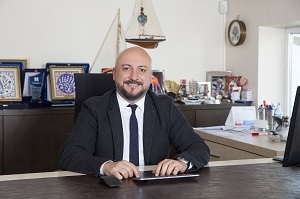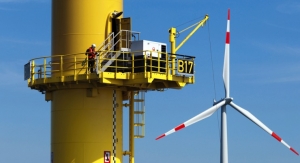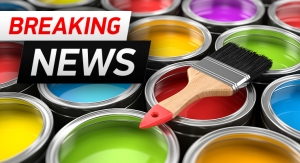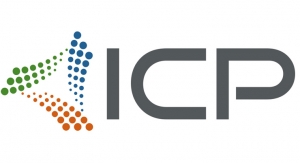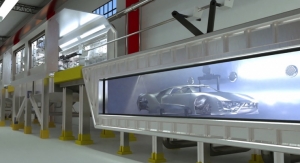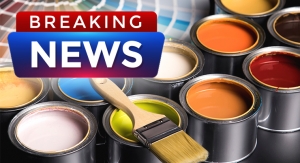Vladislav Vorotnikov, Russia Correspondent05.04.18
In the first quarter of 2017 Russia produced 183,000 tons of coatings, down 8.4 percent compared to the same period of the previous year on the background of the surprisingly weak demand at the domestic market, according to data recently released by the Russian State Statistical Service Rosstat.
Domestic production showed the strongest slump in February, when it released only 71,000 tons of coatings or 29.2 percent less than in February 2017, per Rosstat.
The weak sales can be partly attributed to the low demand from the main domestic consumers of industrial coatings. Rosstat registered the fall of production performance in some segments of the shipbuilding industry by 59.9 percent and in the machine building industry by 32.1 percent. The output was also low on all kinds of construction supplies, reflecting the general downturn trend in the building industry.
These figures are not in line with the forecast of the Russian Industry Ministry. The Ministry expects the consumption of coatings per capita in Russia to steadily grow during the coming decade – starting with 2018. It would jump from the lowest level of 11.2 kg in 2015, to 13.8 kg in 2020, 17.3 kg in 2025 and reaching its peak of about 21.8 kg in 2030.
Speaking to the official newspaper of the Russian government early 2017, Sergey Tsib the deputy head of the Ministry, claimed that the crisis in the coatings industry was over, and the upcoming growth in domestic sales and export should drive the expansion of production capacities. There were 12 new coatings plants slated to be launched in Russia by 2020, he said.
Price wars
Amid the increase in production capacities and rather weak demand Russian coatings producers see the price competition on the domestic market getting tougher.
Speaking in 2017, Ilari Hyyrynen the general manager with the OOO Tikkurila Russia said that the prices for raw materials for coatings products on the domestic market were on the rise. In particular, he cited the rise in prices for titanium dioxide by more than 20 percent during 2017 as well as the strong increase in the purchasing prices for metal packaging on the domestic market.
In this context, coatings manufacturers in Russia are not able to raise prices for their products, as they have to struggle for the customers. Rosstat estimated that the price for coatings in Russia increased by only 2.44 percent in the period from January to July 2017, slightly higher the inflation rate during that period.
Nikolay Yakovlev, the general director of the Russian coating producer Yaroslavl Paints, indicated the tough price competition between coatings producers on the Russian market.
Most companies have to apply for some internal reserves in order to maintain competitive prices, Yakovlev said. However, this “war chest of reserves” is getting smaller every day, as the list of tools the producers could apply to, is actually not too long, he added.
According to him, these problems put pressure on business profitability, pushing some coating manufacturers to cut investments in R&D, while some of them even cut costs by sacrificing the quality of their products.
On this background, small coatings plants in Russia can not compete and have already started going bankrupt. In 2017 in one of the Russian main industrial regions, Sverdlovsk Oblast, three coating plants declared bankruptcy, including LLC Ural Coatings Company, LLC Experimental Production of Painting Materials and LLC Ural Coatings Products Factory.
According to the research conducted by the regional branch of the Russian consulting agency Russian Business Consulting (RBK), several others local coatings plants were also in trouble. At least two of them were generating losses, while all local markets saw their operational profitability shrinking, according to RBK.
The production cost of coatings indeed was on the rise through the industry, while the producers had to constrain the rise in prices for their products in order to not lose the customers, commented Yuri Chumerin, the director of the regional association of building companies. In addition, the coatings plants started feeling the difficulties with selling their products.
The local manufacturers were also attributing the rise in production costs to expensive raw materials. In particular, some of them told RBK that the price for titanium dioxide jumped by nearly two times during 2017, as Crimean Titanium, the only producer of that component in Russia, was not operating sustainable last year.
Room for new capacities?
The problems of the Russian market have not discouraged some investors from launching new production capacities in the country. Just in line with the expectations of the Industry Ministry there are several new state-of-the-art plants slated to be launched in various regions by 2020.
In particular, Tikkurila plans to start building a new production facility in Leningrad Oblast in 2019 and complete the project in 2020. Speaking at a local investment forum in February 2018 Hyyrynen revealed that the designed production capacity of that plant should be around 30 million cans of coatings per year, while the investment cost of the project is expected to be close to Rub2.4 billion ($39 million).
Another project belongs to the Belarus coatings manufacturer LLC Yunibudkolor. The company harbors plans to invest some Rub1 billion ($16 million) to open a plant in Novosibirsk Oblast. The designed production capacity is around 10,000 tons per year.
The plant should start operation in February 2020, said Ivan Sukalo, the deputy general director of LLC Yunibudkolor.
The company chose Siberia to build its plant in Russia, although the competitive fight between coatings producers in that part of the country is believed to be the toughest. LLC Yunibudkolor estimated the demand for coatings in Siberia was between 7 and 8 kg per capita in 2017, and this was lower than in Belarus and much lower than in Moscow.
For instance, in 2016 the sales of coatings in Siberia dropped by almost 15 percent, according to the estimations of the local think tank DSO Consulting.
Russian investor LLC Innovative Industrial Coatings also has plans to build a coatings plant in Moscow Oblast. The designed capacity of that facility is expected to be around 7,000 tons and the company originally plans to make it operational by mid-2018, according to the company’s general director Mikhail Dubovsky.
In cooperation with the Russian company Dega Development, German producer Follmann plans to start building a powder paints plant in Tula Oblast. The investor is ready to pump €5 million into that project to establish capacities for production of 2,200 tons powder paints per year. With this project Follmann plans to improve its positions at the Russian market of coatings for the metal structures, plus to race for some contracts in military industry, the company informed.
These plans were laid down basing on the forecasts of the gradual recovery in the Russian economy after the strong slump in the period from 2014 and 2016. Those forecasts, however, could be revised now, and this could also affect the predictions on the demand for coatings.
The market research conducted by the Higher School of Economy in April 2018 showed that the domestic building industry was far from its best shape. The number of new orders sharply dropped in the second half of 2017 driving the financial performance in the industry to the worst levels last time seen on the peak of the economy crisis in Russia in 2015 and 2016.
Some local analysts also believe that the negative trends in the Russian economy could be accelerated by the sanctions imposed on April 6 by the Trump administration against the seven top Russian businessmen and 12 companies they own or produce.
These sanctions have proved a major blow for the Russian stock exchange and the companies involved, as the ruble suffered its biggest daily fall in more than three years and listed companies controlled by the affected businessmen reportedly lost over $12 billion in market value. As the sanction war between Russia and U.S. is gaining momentum in 2018 over the Syrian conflict, it could add uncertainty to the domestic coatings market.
No coatings imports during the World Cup
The Russian government could disrupt the supply chain in the coatings industry for several months in 2018, by introducing the unprecedented security measures all over the country during the 2018 FIFA World Cup.
It was reported that handling dangerous goods of all classes in Russian ports would be suspended in the period from May 25 until July 25, due to the increased security measures ordered by the Russian government for the time of the event.
The list of dangerous goods among other includes some coatings and some components used to manufacture them, according to the Russian technical legislation.
Basically, it is expected that the government regulation could affect handling of almost all chemical, biological, toxic, radioactive and explosive substances in the Russian sea ports, although the final list of these goods is yet to be revealed.
On this background Russian port authorities advice their clients to create a backlog of imported products on their warehouses in order to be prepared for the upcoming measures.
Domestic production showed the strongest slump in February, when it released only 71,000 tons of coatings or 29.2 percent less than in February 2017, per Rosstat.
The weak sales can be partly attributed to the low demand from the main domestic consumers of industrial coatings. Rosstat registered the fall of production performance in some segments of the shipbuilding industry by 59.9 percent and in the machine building industry by 32.1 percent. The output was also low on all kinds of construction supplies, reflecting the general downturn trend in the building industry.
These figures are not in line with the forecast of the Russian Industry Ministry. The Ministry expects the consumption of coatings per capita in Russia to steadily grow during the coming decade – starting with 2018. It would jump from the lowest level of 11.2 kg in 2015, to 13.8 kg in 2020, 17.3 kg in 2025 and reaching its peak of about 21.8 kg in 2030.
Speaking to the official newspaper of the Russian government early 2017, Sergey Tsib the deputy head of the Ministry, claimed that the crisis in the coatings industry was over, and the upcoming growth in domestic sales and export should drive the expansion of production capacities. There were 12 new coatings plants slated to be launched in Russia by 2020, he said.
Price wars
Amid the increase in production capacities and rather weak demand Russian coatings producers see the price competition on the domestic market getting tougher.
Speaking in 2017, Ilari Hyyrynen the general manager with the OOO Tikkurila Russia said that the prices for raw materials for coatings products on the domestic market were on the rise. In particular, he cited the rise in prices for titanium dioxide by more than 20 percent during 2017 as well as the strong increase in the purchasing prices for metal packaging on the domestic market.
In this context, coatings manufacturers in Russia are not able to raise prices for their products, as they have to struggle for the customers. Rosstat estimated that the price for coatings in Russia increased by only 2.44 percent in the period from January to July 2017, slightly higher the inflation rate during that period.
Nikolay Yakovlev, the general director of the Russian coating producer Yaroslavl Paints, indicated the tough price competition between coatings producers on the Russian market.
Most companies have to apply for some internal reserves in order to maintain competitive prices, Yakovlev said. However, this “war chest of reserves” is getting smaller every day, as the list of tools the producers could apply to, is actually not too long, he added.
According to him, these problems put pressure on business profitability, pushing some coating manufacturers to cut investments in R&D, while some of them even cut costs by sacrificing the quality of their products.
On this background, small coatings plants in Russia can not compete and have already started going bankrupt. In 2017 in one of the Russian main industrial regions, Sverdlovsk Oblast, three coating plants declared bankruptcy, including LLC Ural Coatings Company, LLC Experimental Production of Painting Materials and LLC Ural Coatings Products Factory.
According to the research conducted by the regional branch of the Russian consulting agency Russian Business Consulting (RBK), several others local coatings plants were also in trouble. At least two of them were generating losses, while all local markets saw their operational profitability shrinking, according to RBK.
The production cost of coatings indeed was on the rise through the industry, while the producers had to constrain the rise in prices for their products in order to not lose the customers, commented Yuri Chumerin, the director of the regional association of building companies. In addition, the coatings plants started feeling the difficulties with selling their products.
The local manufacturers were also attributing the rise in production costs to expensive raw materials. In particular, some of them told RBK that the price for titanium dioxide jumped by nearly two times during 2017, as Crimean Titanium, the only producer of that component in Russia, was not operating sustainable last year.
Room for new capacities?
The problems of the Russian market have not discouraged some investors from launching new production capacities in the country. Just in line with the expectations of the Industry Ministry there are several new state-of-the-art plants slated to be launched in various regions by 2020.
In particular, Tikkurila plans to start building a new production facility in Leningrad Oblast in 2019 and complete the project in 2020. Speaking at a local investment forum in February 2018 Hyyrynen revealed that the designed production capacity of that plant should be around 30 million cans of coatings per year, while the investment cost of the project is expected to be close to Rub2.4 billion ($39 million).
Another project belongs to the Belarus coatings manufacturer LLC Yunibudkolor. The company harbors plans to invest some Rub1 billion ($16 million) to open a plant in Novosibirsk Oblast. The designed production capacity is around 10,000 tons per year.
The plant should start operation in February 2020, said Ivan Sukalo, the deputy general director of LLC Yunibudkolor.
The company chose Siberia to build its plant in Russia, although the competitive fight between coatings producers in that part of the country is believed to be the toughest. LLC Yunibudkolor estimated the demand for coatings in Siberia was between 7 and 8 kg per capita in 2017, and this was lower than in Belarus and much lower than in Moscow.
For instance, in 2016 the sales of coatings in Siberia dropped by almost 15 percent, according to the estimations of the local think tank DSO Consulting.
Russian investor LLC Innovative Industrial Coatings also has plans to build a coatings plant in Moscow Oblast. The designed capacity of that facility is expected to be around 7,000 tons and the company originally plans to make it operational by mid-2018, according to the company’s general director Mikhail Dubovsky.
In cooperation with the Russian company Dega Development, German producer Follmann plans to start building a powder paints plant in Tula Oblast. The investor is ready to pump €5 million into that project to establish capacities for production of 2,200 tons powder paints per year. With this project Follmann plans to improve its positions at the Russian market of coatings for the metal structures, plus to race for some contracts in military industry, the company informed.
These plans were laid down basing on the forecasts of the gradual recovery in the Russian economy after the strong slump in the period from 2014 and 2016. Those forecasts, however, could be revised now, and this could also affect the predictions on the demand for coatings.
The market research conducted by the Higher School of Economy in April 2018 showed that the domestic building industry was far from its best shape. The number of new orders sharply dropped in the second half of 2017 driving the financial performance in the industry to the worst levels last time seen on the peak of the economy crisis in Russia in 2015 and 2016.
Some local analysts also believe that the negative trends in the Russian economy could be accelerated by the sanctions imposed on April 6 by the Trump administration against the seven top Russian businessmen and 12 companies they own or produce.
These sanctions have proved a major blow for the Russian stock exchange and the companies involved, as the ruble suffered its biggest daily fall in more than three years and listed companies controlled by the affected businessmen reportedly lost over $12 billion in market value. As the sanction war between Russia and U.S. is gaining momentum in 2018 over the Syrian conflict, it could add uncertainty to the domestic coatings market.
No coatings imports during the World Cup
The Russian government could disrupt the supply chain in the coatings industry for several months in 2018, by introducing the unprecedented security measures all over the country during the 2018 FIFA World Cup.
It was reported that handling dangerous goods of all classes in Russian ports would be suspended in the period from May 25 until July 25, due to the increased security measures ordered by the Russian government for the time of the event.
The list of dangerous goods among other includes some coatings and some components used to manufacture them, according to the Russian technical legislation.
Basically, it is expected that the government regulation could affect handling of almost all chemical, biological, toxic, radioactive and explosive substances in the Russian sea ports, although the final list of these goods is yet to be revealed.
On this background Russian port authorities advice their clients to create a backlog of imported products on their warehouses in order to be prepared for the upcoming measures.

